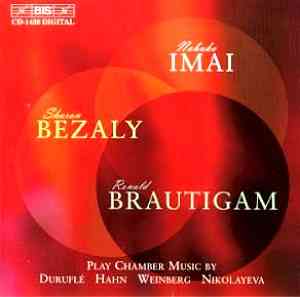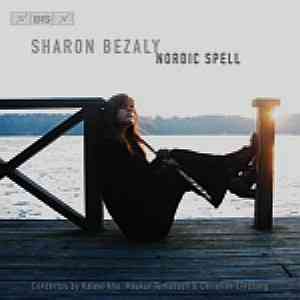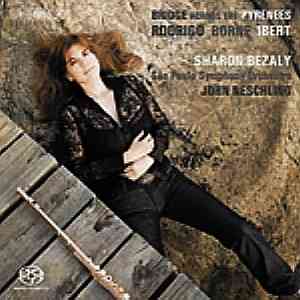
T he official conception of the classic was still linked to a holistic, conservative French community... Reynaldo Hahn’s A nos morts ignorés is typical in its economy of means and its search for an expressive style that incorporates learnèd archaisms, such as modal allusions and ars antiqua organum.”
— Jane Fulcher, p. 91.
H is mind is attracted by a vision, by an image; his heart suffers a feeling; his refined sensuality thrills under the contact of an impression; immediately the emotion is translated into a musical formula, fixed in an instant; but soon reverie gains the upper hand, the image becomes general, the overtones of feeling reverberate, hum, and the inconstant dreamer, seduced by their echo, allows himself to be distracted and carried away.”
— Reynaldo Hahn, speculating on Fauré’s creative process (but really projecting his own process and imagining it as belonging to Fauré), Journal de l’Université des Annales, July 1914, 8:115-8.

[50-sec clip, Reynaldo Hahn, Romanesque, Bezaly-Brautigam-Imai, 1.5MB MP3]
Sharon Bezaly is best known for her performances of the traditional flute repertoire. But she is deeply committed to new music, too. Sofia Gubaidulina, Kalevi Aho, Sally Beamish, Daniel Börtz, Fulvio Caldini, Brett Dean, Carl-Axel Dominique, George Flynn, Hans-Ola Ericsson, Anders Hillborg, Christian Lindberg, Uljas Pulkkis, Ge Gan-ru, Mari Takano, Haukur Tómasson, and Zhou Long have written compositions for her.

She has also this penchant for time-warping and spell-casting, especially with solo and small-ensemble works. Some of it appears on her CD with pianist Ronald Brautigam and violist Nobuko Imai.
Bezaly’s vibrato and phrasing tell us much about the culture and the expressionistic intent, just as Edith Piaf’s voice belongs to mid-Century French culture and Souzay’s performance of Reynaldo Hahn’s song l’Heure exquise illustrates an overtly erotic vocal intent.
The phrases overlap for a moment, as the viola begins to sing over the piano’s dissolving phrase and the flute’s virtual ascent into heaven, carried away. Over the course of the Romanesque the elements gradually converge toward a subtle synthesis that depends on a progressive ‘dematerialization’ of the flute. The strophic construction of the piece enables us to watch this progression in slow motion.
[50-sec clip, Reynaldo Hahn, Romanesque, Bezaly-Brautigam-Imai, 1.4MB MP3]
The etherealization of the flute goes hand in hand with the musical processes of sequence, inversion, and motivic fusion. This yields a kind of musical ‘interiority’, exquisitely deliberate on Hahn’s part and elegantly rendered by Bezaly, Brautigam, and Imai. It refutes the exteriority of mere ‘mimesis of Italian 16th and 17th Century dance’—which is where Horst Scholz’s liner notes for the CD leave it.


What else is on the Bezaly-Brautigam-Imai CD?
- Bezaly—Chamber Music
- Maurice Duruflé: Prelude, Recitatif et Variations, Op. 3
- Reynaldo Hahn: Romanesque; L’Enchanteur; Portraits de peintres; Danse pour une déesse
- Meiczysław Weinberg: Trio, Op. 127
- Tatiana Nikolayeva: Trio, Op. 18
- 14-15 Feb 2008: Bergen: Mozart: Concerto in D Major; Bernstein: Khalil
- 23-24 Feb 2008: Den Haag: Rodrigo: Concerto; Borne: Carmen Suite
- 28 Feb 2008: Norrlands: Rodrigo: Concerto
- 21 Apr 2008: Amsterdam: Recital with Ronald Brautigam
- 23-26 May 2008: Zagorje: Slovenian Flute Festival
- 01-04 Feb 2009: Spain: Tour with London Baroque

- Sharon Bezaly website
- Slovenian Flute Festival
- Ronald Brautigam website
- Chamber Music for Flute, Viola and Piano. (Bis, 2003.)
- Bezaly S, et al. Nordic Spell. (Bis, 2005.)
- Bezaly S, Brautigam R. Masterworks for Flute and Piano. (Bis, 2006.)
- Bezaly S, São Paulo Symphony Orchestra. Bridge Across the Pyrenees. (Bis, 2006.)
- Bezaly S. From A to Z: Solo Flute, Vol. 1. (Bis, 2003.)
- Bezaly S, Norrköping Symphony Orchestra. Paul Kletzki: Concertino for Flute. (Bis, 2004.)
- Bezaly S, Aalborg Solisten, et al. Night Music. (Bis, 2002.)
- Bezaly S, Nagy E. Flutissimo. (Bis, 1999.)
- Divje Babe paleolithic Slovenian bone flute (43,000 years old)
- Fink R. Neanderthal Flute webpage.
- Reynaldo Hahn page on Wikipedia
- Brown R. The Early Flute. Cambridge Univ, 2003.
- Fulcher J. The Composer As Intellectual: Music and Ideology in France, 1914-1940. Oxford Univ, 2005.
- McCutchan A. Marcel Moyse: Voice of the Flute. Amadeus, 2003.
- Miller D, Boehm T. The Flute and Flute-Playing. Dover, 1964.
- Powell A. The Flute. Yale Univ, 2003.
- Solum J. The Early Flute. Oxford, 1995.
- Turk I. Mousterian Bone Flute & Other Finds from Divje Babe I Cave Site. Znanstvenoraziskovalni Sazu, 1997.
- Wallin N, Merker B, Brown S, eds. Origins of Music. MIT, 2001.
No comments:
Post a Comment